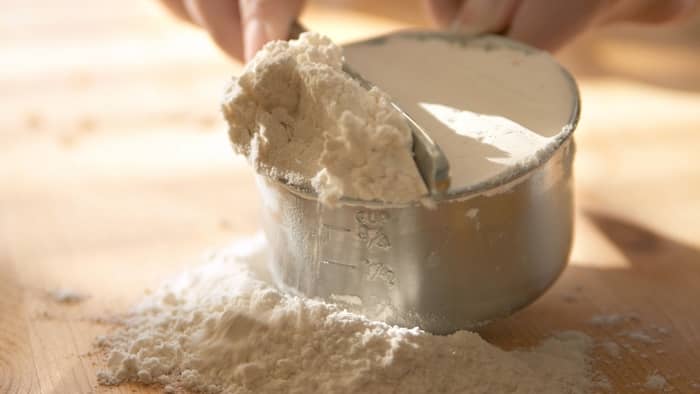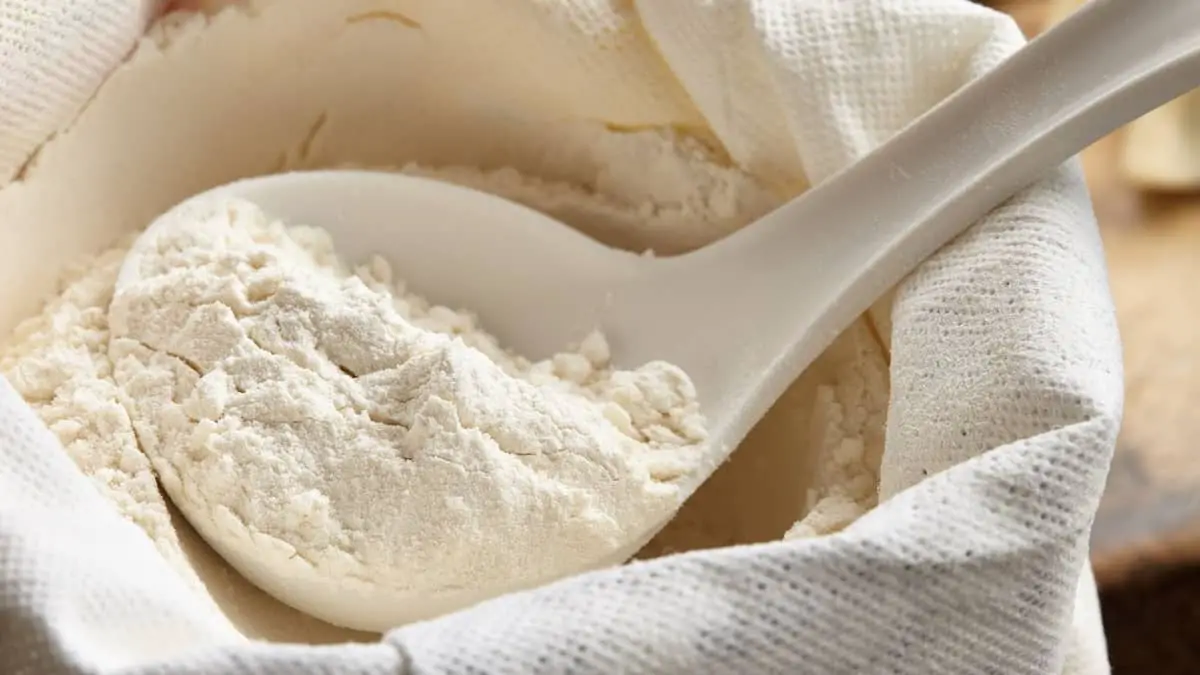Last Updated on January 11, 2022
Quite often, a recipe calls for a scant cup of something. But, what is a scant cup? How much is in it? And, how exactly do you measure it?
Quite often a recipe will call for a scant cup and you have no idea what to do. Luckily, we have created an in-depth guide that will help you immensely! We will be explaining what a scant cup is, how much is a scant cup, how to measure a scant cup, and so much more! Now, you never have to waste time searching for the answer again.
What Does Scant Cup Mean?
The word “scant” is defined as “barely sufficient”. When the word is used to describe measuring a cup of ingredients, it means that the amount should be a tiny bit less than a cup, aka., not packed to the top. So, a scant cup of flour isn’t a full cup – it is slightly less.
This word can also be used to describe the amounts used when measuring with teaspoons or tablespoons. For example, a scant teaspoon would be slightly less than a full teaspoon. The same goes for tablespoons and any other type of measuring tool.
The term is mostly used to describe measurements in volume, never weight! You wouldn’t find a recipe calling for a scant 100 grams of flour. They would simply state 90 grams or 95 grams.
When recipes provide measurements in weight it is incredibly accurate and should be followed exactly.
Measuring Cups and Spoons Set 18 Piece, AIKEXIN
How Much Is A Scant Cup?
A scant cup is usually 2 tablespoons less than a full cup. You can also use 7/8 cup or 210 milliliters. However, there are a few factors to consider and a few ways to measure this out.
First, measuring it by volume (using cups and tools) is possible, but less accurate. You should rather measure a scant cup by weight.
However, in doing so there is another problem you will run into. One cup of flour doesn’t weigh the same as one cup of salt (for example). So, you will have to convert the cups to grams for each specific ingredient (there isn’t a one-size-fits-all conversion).
How Do You Measure A Scant Cup?
Now that we have answered exactly “what does scant cup mean?”, we can look at how to measure it. But first, let’s have a look at how to measure a regular cup.
A regular cup is measured by scooping the ingredients into the cup itself, then leveling the top using a straight edge. You should NEVER tamp down the ingredients unless the recipe calls for it, especially dry ingredients. Tamping down a cup means banging it so that the ingredient is more compact (essentially, you are adding more in one cup than an actual cup is).

Method 1: Eyeball it
Using cups and spoons as measuring tools is already not the most accurate. So, eyeing the reduced amount won’t make or break the recipe.
You should try to fill the cup to about 7/8 full. This will be slightly below the top of the cup or below the “full cup” indicator line.
Method 2: Measure a cup and remove
This is a better way to measure a scant cup compared to eyeballing it. A scant cup is generally about 2 tablespoons (30 ml) less than a full one.
So, to calculate how many ml is a scant cup?, simply subtract 30 ml from 240 ml (US cup). This leaves you with 210 ml.
To use this method, you can measure out one cup of your ingredient and remove 2 tablespoons of it. You can also use 6 teaspoons.
When using this method, for the most accurate results, make sure to level your tablespoons (or teaspoons) as you remove them. A heaped tablespoon doesn’t measure the same as a level one. This could make a massive difference in the end.
Method 3: Measuring exactly
This is the most accurate method you can use, but sometimes it requires some calculating. You can either accurately measure a scant cup using volume or weight. Weight is much more accurate.
Where the difficulty comes in is that different ingredients have different weights by volume.
One scant cup is about 210 ml ( a full US cup is 240 ml). You can use this site to help you convert the volume (210 ml) of an ingredient to a weight. Then, you can weigh it out using a scale exactly.
So, as an example, one US cup of plain flour weighs 125 grams. When using the converter, 7/8 cup of plain flour (210 ml) weighs 109 grams.
How Many Grams Is A Scant Cup Of Flour?
This depends entirely on the type of flour you use. As we have mentioned before, different ingredients have different weights by volume. This also applies to flour.
As you can see from our helpful table, a flour-like all-purpose flour is much denser and therefore weighs a lot more than compared to something like rye flour. While a gram or two difference won’t ruin your recipe, when it comes to larger gaps, it certainly will.

You can have a look at the table below to easily find how much your cup of flour weighs.
| Weights for flours per cup and scant cup | ||
| Flour type | Grams per cup (240 ml) | Grams per scant cup (210 ml) |
| All-purpose flour | 125 grams | 109 grams |
| Bread flour | 127 grams | 111 grams |
| 00 flour | 127 grams | 111 grams |
| Plain flour | 125 grams | 109 grams |
| Rye flour | 102 grams | 89 grams |
| Self-raising flour | 125 grams | 109 grams |
| Whole wheat flour | 120 grams | 105 grams |
| Wholemeal flour | 120 grams | 105 grams |
Then, just to cover all of your bases and make your life even easier, we have also included a list of some other common types of flours that are used today.
| Weights for flour alternatives per cup and scant cup | ||
| Flour type | Grams per cup (240 ml) | Grams per scant cup (210 ml) |
| Chickpea flour | 92 grams | 81 grams |
| Rice flour | 160 grams | 140 grams |
| Almond flour | 96 grams | 84 grams |
| Buckwheat flour | 120 grams | 105 grams |
| Cassava flour | 92 grams | 80 grams |
| Coconut flour | 112 grams | 98 grams |
| Oat flour | 90 grams | 79 grams |
| Corn flour | 150 grams | 131 grams |
Final Words
Did you learn as much as we did? Share this amazing guide with your family and friends to help make their lives much easier as well! And, if you have any questions, let us know in the comments below!

Lindy Van Schalkwyk is a culinary specialist with a background in Advanced Cooking, Advanced Pâtisserie, Media Communications and Nutrition. She has gained invaluable experience in the culinary industry having worked in some of the top restaurants in Africa in 2016 and 2017. Her expertise in nutrition has enabled her to develop recipes for special dietary needs. In 2018, Lindy began working in the Food Media industry, focusing on recipe development, recipe writing, food writing and food styling.


